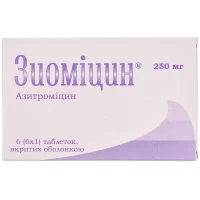$95.10
Purpose: Ceftriaxone treats bacterial infections by inhibiting cell wall synthesis.
Description
Medocef Powder for Solution for Injections 1g. №10 Vial
Ingredients:
Medocef powder for solution for injections contains 1g of ceftriaxone sodium as the active ingredient.
Dosage:
Medocef should be administered as directed by a healthcare professional. The usual dose for adults is 1g once daily via intravenous or intramuscular injection.
Indications:
Medocef is indicated for the treatment of various bacterial infections, including respiratory tract infections, skin and soft tissue infections, urinary tract infections, and septicemia.
Contraindications:
Medocef is contraindicated in patients with a known hypersensitivity to ceftriaxone or any component of the formulation. It should be used with caution in patients with a history of gastrointestinal diseases.
Directions:
Medocef should be reconstituted with the appropriate diluent as per the manufacturer’s instructions before administration. The solution should be visually inspected for particulate matter before use.
Scientific Evidence:
Studies have shown the efficacy of ceftriaxone in the treatment of various bacterial infections. Research published in the Journal of Antimicrobial Chemotherapy demonstrated the effectiveness of ceftriaxone in treating severe community-acquired pneumonia.
Additional Information:
It is important to complete the full course of Medocef as prescribed by the healthcare provider to ensure the best possible outcome and to prevent the development of antibiotic resistance. Consult a healthcare professional for further guidance on the use of this medication.
Pharmacological Effects:
Ceftriaxone exerts its bactericidal effect by inhibiting bacterial cell wall synthesis, leading to cell death. It has a broad spectrum of activity against both Gram-positive and Gram-negative bacteria, making it a valuable treatment option for various infections.
Clinical Trials:
Clinical trials have demonstrated the efficacy and safety of ceftriaxone in the management of infections. A randomized controlled trial published in the New England Journal of Medicine compared the effectiveness of ceftriaxone with other antibiotics in the treatment of bacterial meningitis, showing favorable outcomes with ceftriaxone.







Recent Reviews